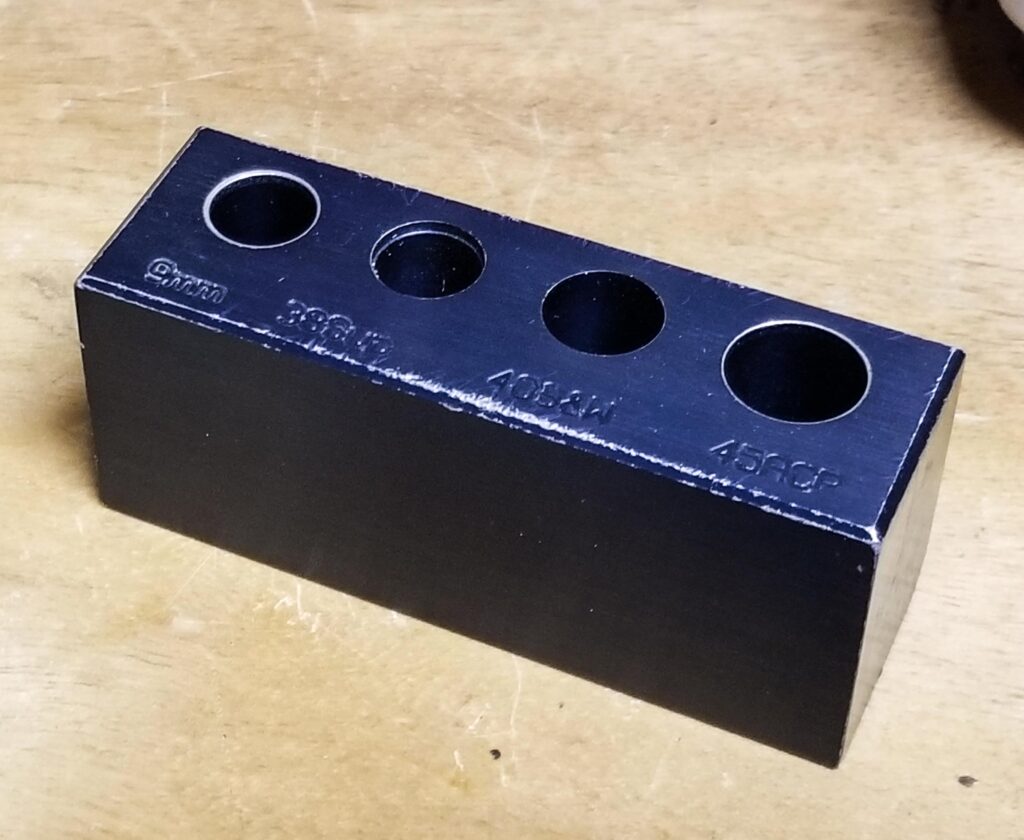Whether you hand load or shoot factory ammunition, we generally expect the gun to go bang when we pull the trigger with live ammunition. During a competitive event or other critical time, one of the worst things to happen is a click instead of a bang. Assuming we didn’t have a mechanical malfunction of the firearm, it could be the ammunition. Luckily there is an easy way to greatly reduce the chance of this happening!

What could go wrong with ammunition to cause it not to fire? Well quite a few things. Ammunition manufacturers have both automated and manual QC checks, but anything mechanical or done by man can fail. For those who load ammunition at home, the QC is as much or as little as you want. When loading, properly setting up the press, dies and following all of the steps to load ammo should be done, but we won’t cover that here.

From the time I started handloading, chamber checking or gauging my cartridges have kept ammunition problems at a minimum. This involves using either the actual barrel out of the firearm (easy with a pistol, not always with a rifle) or case gauge. I do NOT like to cycle ammo through the assembled firearm as this can create a problem in a hurry, especially if you do find a bad round so I do not recommend this practice.
For gauging ammo, simply insert the cartridge into the chamber of the removed barrel or into the case gauge. If it fits without issue and falls out, you should have a cartridge that is loaded within acceptable dimensions and doesn’t have any major flaws. I’ll use this time to also visually inspect the cartridge for oddities on the case such as a slight rupture, deformed bullet or corrosion if it was previously stored in a questionable manner. Finally, I’ll also check by feel and visually inspect the primer to ensure it is oriented the right way and at a sufficient depth. Once you’ve done this a few hundred times, it goes fairly quickly.


A machine or human hands might catch most issues for factory ammo, these processes might not catch every single issue over millions of rounds. While rare, I have seen bullets inserted backwards, inverted primers, overall length errors, gouges in the bullet or case and burrs on the case mouth. Having one of these cycle through during practice might create a malfunction that can be cleared or problem that can be dealt with, finding out during a competition might ruin your day. Simple lesson, before your match spend the 20 minutes checking your ammunition.

There are several companies making case gauges. In a pinch with a pistol you can take the barrel out and use it, or use the cylinder of your revolver. Rifles can be a little harder to do, but for most cartridges loaded or shot in volume there are case gauges. Beware that you are getting a gauge that checks the case dimensions and not just a case holder to ensure you’re checking the right things. As a note for lower volume precision rifle ammunition, I don’t necessarily case gauge/check with the chamber as the more hands-on steps to case prep and loading will find/cull any issues along the way.

A few links to gauges that work well:
EGW Chamber Checkers: https://www.egwguns.com/chamber-checkers/
JP Case Gauges: https://jprifles.com/1.5.1.2_maint.php
Lyman Case Gauges: https://www.lymanproducts.com/brands/lyman/case-prep-tools/case-gauges

